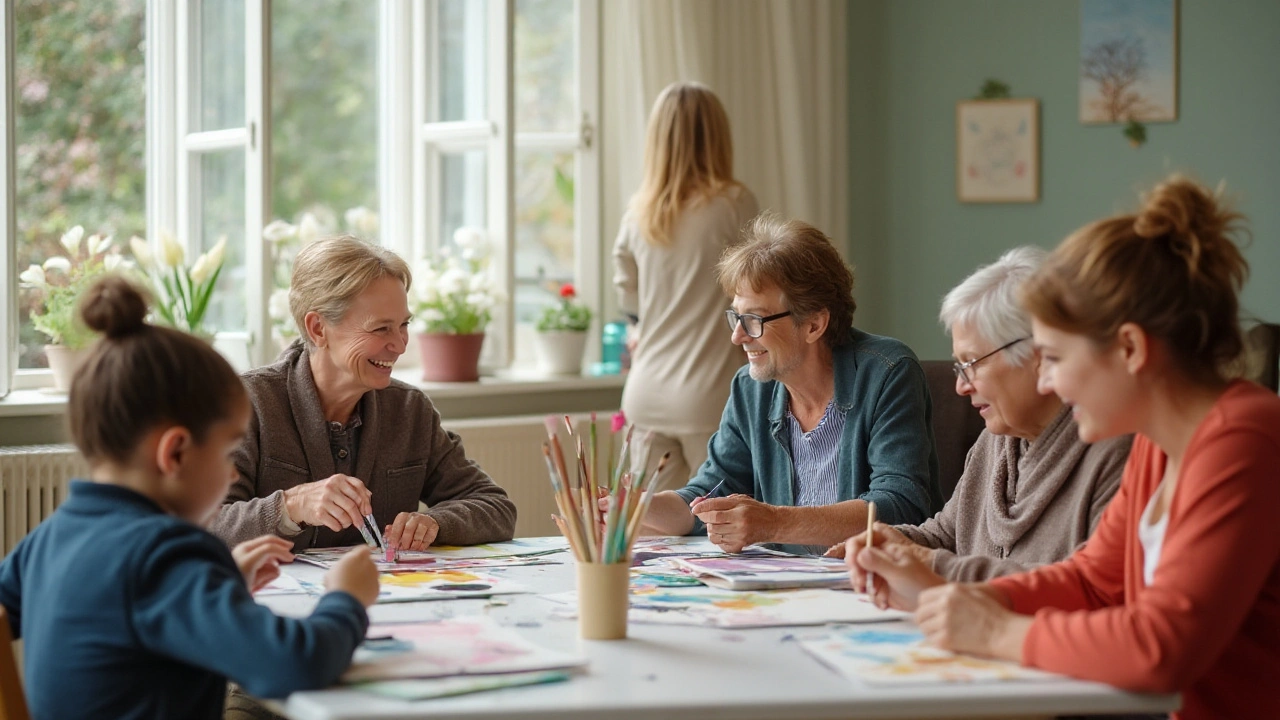Creative therapy: Heal, express, and build resilience
Creative therapy uses art, music, movement, drama, or writing to help you process feelings, reduce stress, and solve problems without relying only on talk. It works when words fall short. If you feel stuck, nervous, or numb, creative methods can open a new way to understand and change what’s going on.
One clear benefit? You don’t need to be talented. Therapists focus on the process, not the product. That means messy paint, simple beats, or short scenes can reveal hidden thoughts, calm anxiety, and improve mood. Many people find changes after just a few sessions because creative outlets tap into nonverbal parts of the brain.
Types of creative therapy you can try
Art therapy: Paint, collage, or clay to explore emotions. Great for trauma, grief, and stress.
Music therapy: Use rhythm, singing, or listening to process feelings and boost focus.
Drama therapy: Role play and storytelling to practice new behaviors and ease social fear.
Dance/movement therapy: Shift mood and body tension through guided movement and breath.
Expressive writing: Short prompts help you sort thoughts, reduce rumination, and spot patterns.
Each approach targets different needs. Art can make emotions visible. Music changes your nervous system. Movement connects body and mind. Writing clarifies choices. A therapist often mixes methods to fit your goals.
How to get started
Start small at home: give yourself ten minutes with crayons, a short playlist, or a three-line journaling prompt like “I feel… because… I need…”. No rules, no judging. Notice how your body and thoughts shift.
When to see a pro? If strong memories, panic, or painful urges come up, work with a licensed creative therapist or clinician. Ask about credentials, session structure, and whether they blend creative methods with talk therapy. A good therapist explains the purpose of each activity and helps translate images or movements into practical steps.
Practical tips for sessions: wear comfy clothes for movement, bring a photo or object that matters to you, and be honest about limits (like not wanting to sing in public). Progress often looks like better sleep, clearer choices, less reactivity, and new ways to cope.
Creative therapy isn’t a quick fix, but it changes how you relate to feelings and behaviors. If talk therapy feels stuck, or if you want tools that work through the body and senses, creative approaches give fresh paths to healing. Try one small exercise this week and note what shifts. Even tiny moves can lead to real change.
Try this 10-minute art prompt: set a timer, choose three colors, paint how your week felt without labels, then circle the part that feels heaviest and write one small action to lighten it. For movement: put on a song, move for three minutes focusing on breath, then sit and notice tension. For music: make a two-song playlist — one that calms, one that energizes — and use them at different times. Read our posts on art therapy and biofeedback to learn how professionals structure sessions effectively.

The Healing Power of Art: Exploring Benefits of Creative Arts Therapies
Creative arts therapies harness the power of artistic expression to support emotional, mental, and physical well-being. This article explores various forms of creative arts therapies, their benefits, and insights from professionals and individuals who found healing through these practices. Understanding how art can be a therapeutic tool allows us to appreciate its broader impact on health and wellness.
Read More